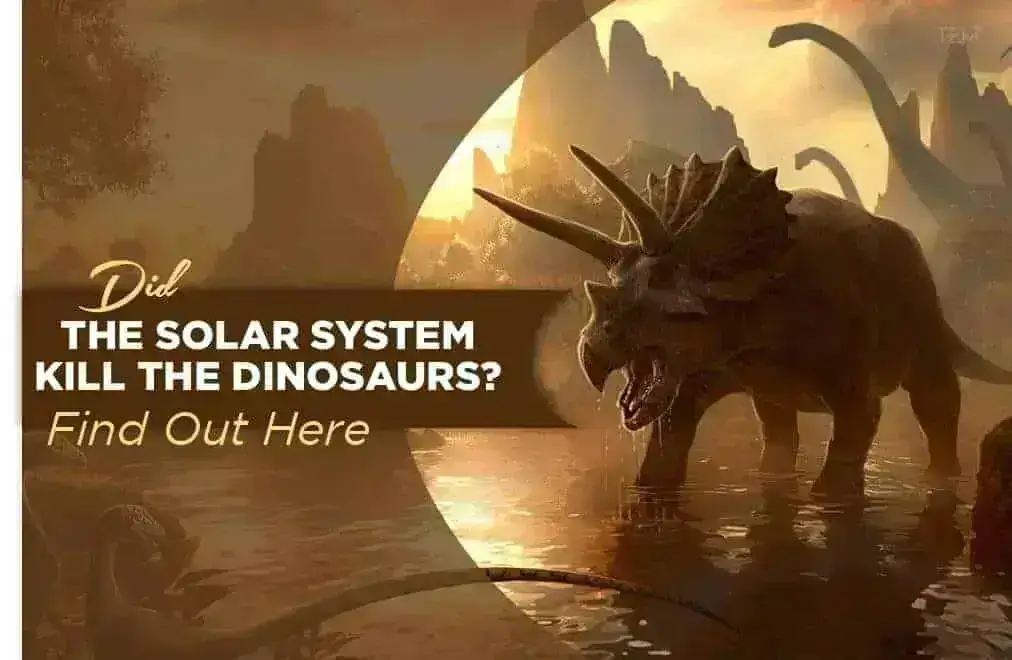Nearly 66 million years ago a huge celestial object struck off the coast – now known as Mexico. This created a catastrophic impact of winter which eventually wiped out 3/4th of life on Earth – including dinosaurs. We all have been part of the debate that discussed the extinction of dinosaurs; some believed that a volcano eruption followed by a massive earthquake was the reason; while some believed that a pandemic resulted in the extinction of the species.
Recently, the mysteries surrounding the extinction of the dinosaurs were resolved by pair of astronomers at Harvard University. The nature and origin of the “Chicxulub Impactor” was studied and this study focused on debugging the events which led to the collision with Earth. The comet is estimated to be tens of miles wide in size which is till date one of the largest impacts of craters on Earth (150 kilometers).
Pin-Ball of Solar System

The team of researchers Avi Loeb, Frank B. Baird, and Amir Siraj, published a paper in the journal Scientific Reports this week that eradicated the old theory that claims the object was a fragment of an asteroid that came from the solar system’s main belt.
The research stated that Jupiter acts like a pinball machine that kicks these incoming long-period comets into orbits that bring them extremely close to the sun. The lead author Amir Siraj stated, “Jupiter is so important because it’s the most massive planet in our solar system.”
Their research summarizes that the comet was originated from the region of icy debris on the edge of the solar system, consequently drawing to the conclusion that Jupiter was responsible for this impact. And similar impacts are anticipated to occur every 250 million to 750 million years.
Long-period Comets or the Sungrazers

These comets are also known as the “long-period comets” which belong to the Oort cloud. Long-period comets—also known as sungrazers – take about 200 years to orbit the sun.
This Oort cloud is thought to be a giant spherical shell surrounding the solar system like a bubble that is constructed of icy pieces of debris – the size of mountains or larger. As these pieces come from the deep freeze of the outer solar system, these comets are icier than asteroids. Another distinguisher is the stunning gas and dust trails they leave behind when they melt.
“But, the evaporative impact of the sun’s heat on sungrazers is nothing compared to the massive tidal forces they experience when one side faces our star,” said Siraj.
He further explained that these comets experience such a tidal force that the most massive of them would shatter into about a thousand fragments, each of those fragments large enough to produce a Chicxulub size impactor or dinosaur-killing event on Earth.
Siraj also developed a statistical model that showed the probability that long-period comets would hit Earth that is consistent with the age of Chicxulub and other known impactors.
Another line of Evidence

The comet origin theory is supported by the composition of Chicxulub. Only about a tenth of all asteroids from the Main Belt—that is between Mars and Jupiter, is constructed from carbonaceous chondrite, while most comets have it.
This evidence also rules out that the Chicxulub crater-like other similar crater, like the Vredefort crater in South Africa that was struck about 2 billion years ago, and the million-year-old Zhamanshin crater in Kazakhstan, all consisted of carbonaceous chondrite.
Search the Sky

The study has put forth yet another hypothesis that can be confirmed by studying these craters—ones on the moon, or even by sending out space probes to take samples from comets.
The team of researchers did calculate that Chicxulub-like impactors would take place every few hundreds of millions of years. Loeb concluded, “It’s a statistical thing, you say, ‘on average, it’s every so often but you never know when the next one will come. The best way to find out is to search the sky.”
Also Read, The Story behind Why Is Pluto Not a Planet










